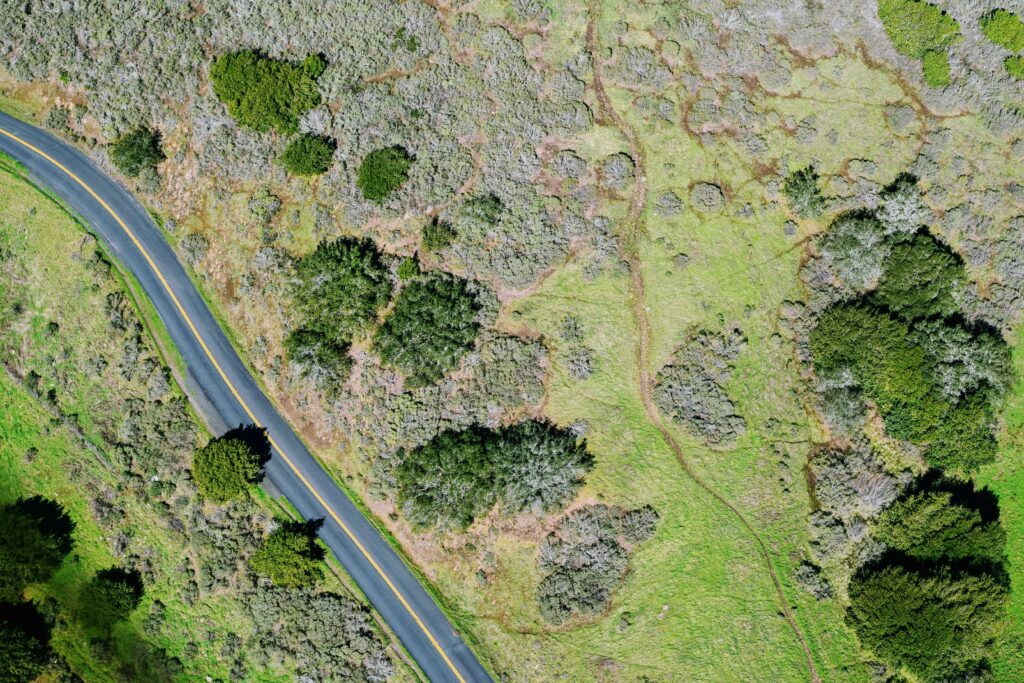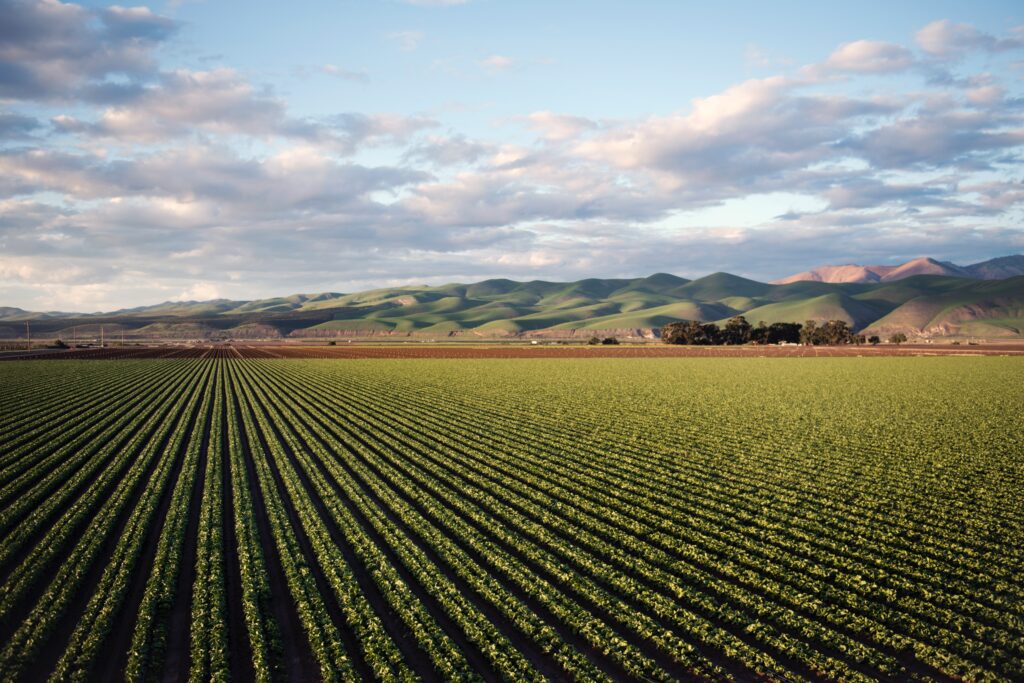Think about the best farmland you’ve ever seen. The rich, dark soil, free of rocks and ditches, stretched out for acres.
Now think about the worst farmland you’ve ever seen. Maybe it was full of hills and gullies, making it difficult to get equipment onto the land.
Or maybe the soil was too light and sandy, making it difficult to grow anything.
So what makes the difference?
Why is one plot of land so much more productive than another?
The answer lies in topography – specifically, in how topography affects agricultural yields.
In this post, we’ll look closely at how does topography affect agricultural yields. Stay tuned!

Topography in Agriculture
The topography of a piece of land refers to its physical features, such as the relief (the difference in height between different parts of the land), slope, aspect (the direction that a slope faces), and elevation.
This term is often used in agriculture, as a farm’s topography can significantly impact its suitability for different crops and farming methods.
For example, a farm with rolling hills may be well suited to grazing livestock, while a farm with steep slopes may be better suited to planting trees.
In addition, the topography of a region can also affect local climate patterns, which can, in turn, impact agricultural production—as such, understanding the topography of a piece of land is an essential part of thriving agriculture.
How does topography affect agricultural yields:

Elevation:
The elevation is one of the most apparent ways topography can affect agriculture.
Crops grown at high elevations tend to mature more slowly due to the colder temperatures experienced at these altitudes.
Additionally, ultraviolet radiation is more intense at higher elevations, which can lead to sunburn and other damage to crops.
To counter these effects, farmers who grow crops at high elevations must be extra vigilant about pest and disease control and select slow-maturing varieties of their desired crops.
Slope:
The angle of a piece of land’s slope (or incline) can also affect agricultural yields.
It can be challenging for water and nutrients to penetrate the soil on steep slopes, leading to stunted plant growth.
Erosion is also a significant concern on sloped land, as rainwater and irrigation runoff can quickly wash away valuable topsoil.
Terracing or contour farming is often used on sloped land to combat these problems.
These methods involve creating level steps or ledge-like hollows in the slope upon which crops are planted.
By breaking up the slope, water and nutrient loss are minimized, and crop yields are increased.
Aspect:
Another factor related to the slope is the aspect or the direction that a slope faces.
South-facing slopes tend to be warmer than north-facing slopes since they receive more direct sunlight throughout the day.
This temperature difference can lead to different optimum planting times for crops on the south- and north-facing slopes.
For example, a crop that flourishes when planted early in the season may do better on a south-facing slope than on a north-facing pitch since it will receive more warmth earlier in the growing season.
Conversely, a heat-sensitive crop may do better on a north-facing slope since it will be protected from the hottest afternoon sun rays.
Knowing the aspect of your land can help you choose crops that will perform well, given the unique microclimate created by that aspect.
Drainage:
One of the most critical aspects of topography is drainage. Good drainage is essential for healthy plant growth, as it helps to prevent waterlogged soil.
Poor drainage can also lead to problems with pests and diseases and nutrient deficiencies.
Several ways to improve drainage in agricultural land include using raised beds, installing drainage tiles, and introducing organic matter into the soil.
By understanding the importance of drainage, farmers can ensure that their crops receive the necessary amount of water without being waterlogged.
Proximity to Water:
The proximity of farmland to water is a critical aspect of topography that can affect crop yields.
Plants need water to grow, so farmland closer to a water source will generally produce more bountiful crops.
In addition, proximity to water can also help to protect crops from fires.
Furthermore, farmland closer to a river or lake is less likely to be affected by drought conditions.
As a result, proximity to water is essential for any farmer who wants to maximize crop yields.
Types of Topography:
Rolling Hills:
Rolling hills are one of the most common types of topography in agricultural areas.
This type of topography can have several positive effects on crops.
First, the rolling hills can provide good drainage for the crops. It is essential because too much water can drown the roots of the plants and prevent them from getting the oxygen they need.
Second, the rolling hills can protect from strong winds. It is essential because wind can damage crops, exceedingly soft fruits and vegetables like grapes and tomatoes.
Flat Plains
Another common type of topography in agricultural areas is flat plains.
This type of topography has a few advantages for crops.
First, flat plains have good soil fertility. It means the soil has all the nutrients plants need to grow healthy and strong.
Second, flat plains have good sun exposure. It is crucial because plants need sunlight to photosynthesize and create the food they need to grow.
Third, flat plains have good irrigation access. Farmers can easily water their crops using irrigation systems like sprinklers or drip lines.
Mountainous Areas
Mountainous areas are another type of topography often found in agricultural areas.
This type of topography can be both good and bad for crops.
On the one hand, mountainous areas have good drainage. It is essential because it helps to prevent waterlogged soil. On the other hand, mountainous regions can be difficult to farm. The steep slopes can make it difficult to plant and harvest crops.
In addition, mountainous areas can be prone to landslides. It is a severe problem because it can damage crops and structures.
As a result, farmers who live in mountainous areas must carefully choose crops that will do well in their particular topography.
Frequently Asked Questions:
What is the most important aspect of topography for crops?
There is no single most important aspect of topography for crops. Different elements can be more or less important depending on the specific crop being grown and the conditions of the agricultural land. However, some of the most important crop topography aspects include drainage, water proximity, and sun exposure.
How does topography affect crop yields?
The effect of topography on crop yields can vary depending on the specific crop being grown and the conditions of the agricultural land. However, in general, good drainage, proximity to water, and sun exposure are all factors that can positively affect crop yields.
What are the most common types of topography in agricultural areas?
The two most common types of topography in agricultural areas are rolling hills and flat plains. Rolling hills provide good drainage and protection from strong winds, while flat plains have good soil fertility and sun exposure. Mountainous areas are also often found in agricultural areas, but they can be difficult to farm due to the steep slopes.
What are the benefits of a suitable topography for crops?
A good topography for crops benefits includes improved drainage, proximity to water, and sun exposure. These factors can all help to improve crop yields.
The Bottom Line:
As you can see, several factors affect agricultural yields – weather, pests, soil type, topography, etc.
Topography is just one piece of the puzzle, but it’s essential to consider if you want to maximize your yields. Keep these factors in mind as you plan your next crop rotation!
